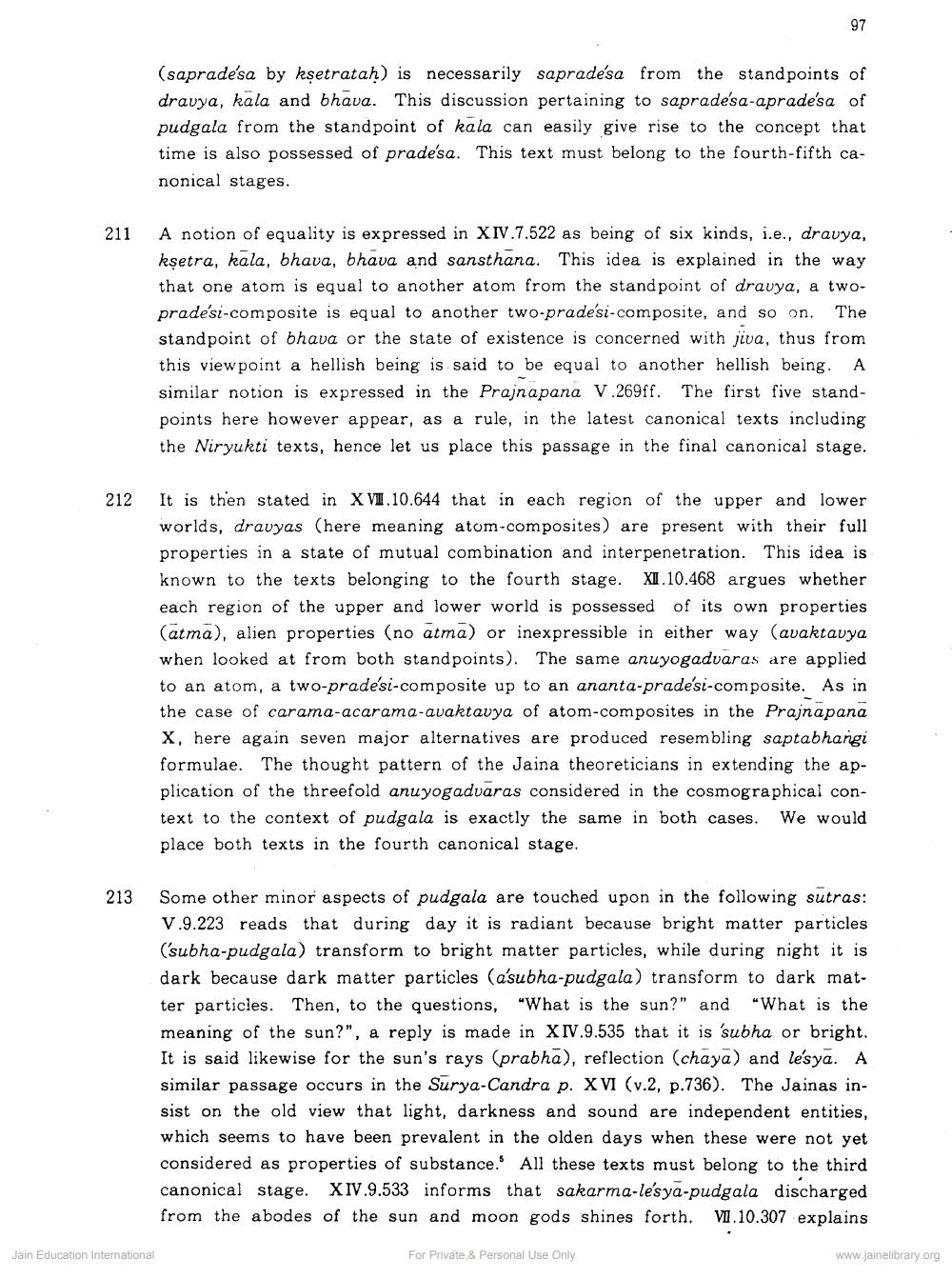________________
(saprade'sa by kşetratah) is necessarily saprade'sa from the standpoints of dravya, kala and bhava. This discussion pertaining to sapradesa-aprade'sa of pudgala from the standpoint of kala can easily give rise to the concept that time is also possessed of prade'sa. This text must belong to the fourth-fifth canonical stages.
211
A notion of equality is expressed in XIV.7.522 as being of six kinds, i.e., dravya, kşetra, kala, bhava, bhava and sansthana. This idea is explained in the way that one atom is equal to another atom from the standpoint of drauya, a twoprade-si-composite is equal to another two-prade'si-composite, and so on. The standpoint of bhava or the state of existence is concerned with jiva, thus from this viewpoint a hellish being is said to be equal to another hellish being. A similar notion is expressed in the Prajnapana V.269ff. The first five standpoints here however appear, as a rule, in the latest canonical texts including the Niryukti texts, hence let us place this passage in the final canonical stage.
212
It is then stated in X VI.10.644 that in each region of the upper and lower worlds, dravyas (here meaning atom-composites) are present with their full properties in a state of mutual combination and interpenetration. This idea is known to the texts belonging to the fourth stage. XI.10.468 argues whether each region of the upper and lower world is possessed of its own properties Catma), alien properties (no atma) or inexpressible in either way (avaktavya when looked at from both standpoints). The same anuyogadvaras are applied to an atom, a two-prade'si-composite up to an ananta-pradesi-composite. As in the case of carama-acarama-avaktavya of atom-composites in the Prajnapana X, here again seven major alternatives are produced resembling saptabhangi formulae. The thought pattern of the Jaina theoreticians in extending the application of the threefold anuyogadvaras considered in the cosmographical context to the context of pudgala is exactly the same in both cases. We would place both texts in the fourth canonical stage.
213
Some other minor aspects of pudgala are touched upon in the following sutras: V.9.223 reads that during day it is radiant because bright matter particles (subha-pudgala) transform to bright matter particles, while during night it is dark because dark matter particles (a'subha-pudgala) transform to dark matter particles. Then, to the questions, "What is the sun?" and "What is the meaning of the sun?”, a reply is made in XIV.9.535 that it is 'subha or bright. It is said likewise for the sun's rays (prabha), reflection (chaya) and le'sya. A similar passage occurs in the Surya-Candra p. XVI (v.2, p.736). The Jainas insist on the old view that light, darkness and sound are independent entities, which seems to have been prevalent in the olden days when these were not yet considered as properties of substance. All these texts must belong to the third canonical stage. XIV.9.533 informs that sakarma-le'sya-pudgala discharged from the abodes of the sun and moon gods shines forth. VI.10.307 explains
Jain Education International
For Private & Personal Use Only
www.jainelibrary.org




